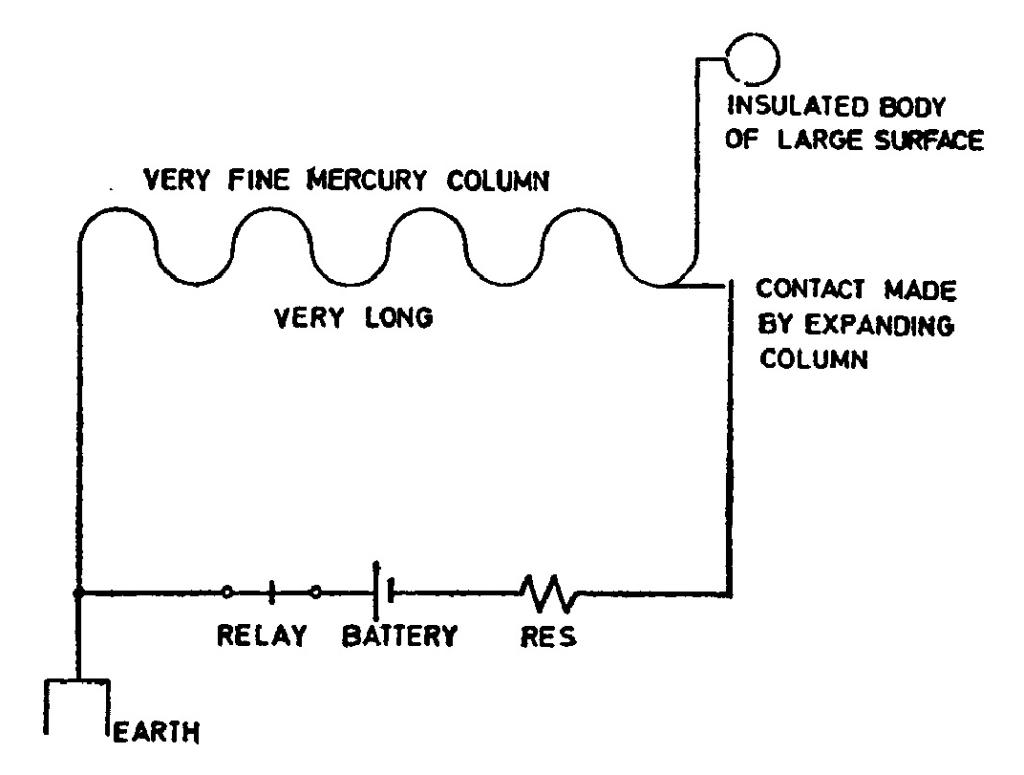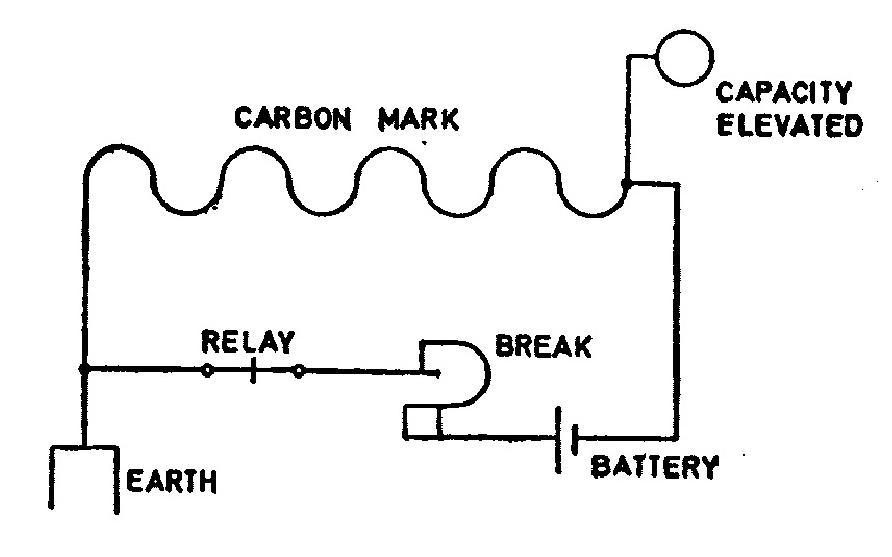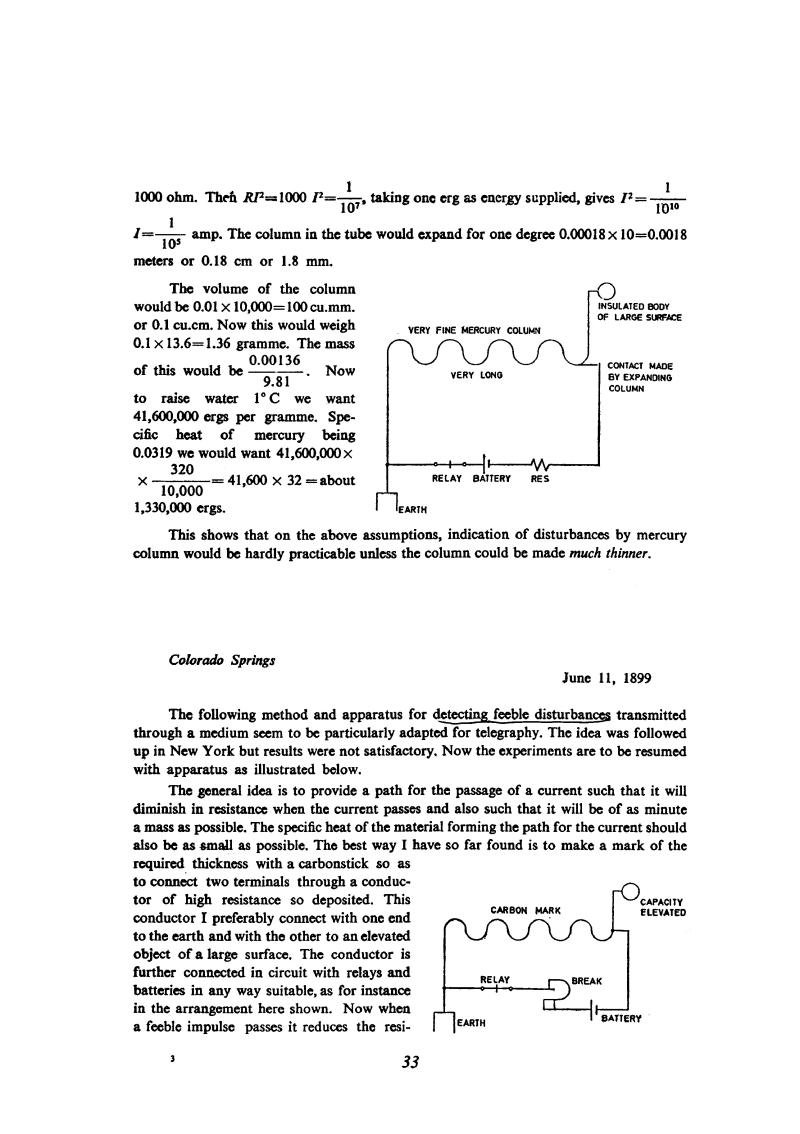
Nikola Tesla Books
1000 ohm. Then RI2 = 1000 I2 = $! {1 \over 10^7} $!, taking one erg as energy supplied, gives I2 = $! {1 \over 10^{10}} $! I = $! {1 \over 10^5} $! amp. The column in the tube would expand for one degree 0.00018 x 10 = 0.0018 meters or 0.18 cm or 1.8 mm.
The volume of the column would be 0.01 x 10,000 = 100 cu.mm. or 0.1 cu.cm. Now this would weigh 0.1 x 13.6 = 1.36 gramme. The mass of this would be $! {0.00136 \over 9.81} $!. Now to raise water 1°C we want 41,600,000 ergs per gramme. Specific heat of mercury being 0.0319 we would want 41,600,00 x $! {320 \over 10,000} $! = 41,600 x 32 = about 1,330,000 ergs.
This shows that on the above assumptions, indication of disturbances by mercury column would be hardly practicable unless the column could be made much thinner.
Colorado Springs
June 11, 1899
The following method and apparatus for detecting feeble disturbances transmitted through a medium seem to be particularly adapted for telegraphy. The Idea was followed up in New York but results were not satisfactory. Now the experiments are to be resumed with apparatus as illustrated below.
The general idea is to provide a path for the passage of a current such that it will diminish in resistance when the current passes and also such that it will be of as minute a mass as possible. The specific heat of the material forming the path for the current should also be as small as possible. The best way I have so far found is to make a mark of the required thickness with a carbonstick so as to connect two terminals through a conductor of high resistance so deposited. This conductor I preferably connect with one end to the earth and with the other to an elevated object of a large surface. The conductor is further connected in circuit with relays and batteries in any way suitable, as for instance in the arrangement here shown. Now when a feeble impulse passes it reduces the resi-
33
Tesla: âPhenomena of alternating currents of very high frequencyâ, The El. World, Febr. 21, 1891, A-3.
âElectric discharge in vacuum tubesâ, The El. Engineer, July 1, 1891, A-16.



